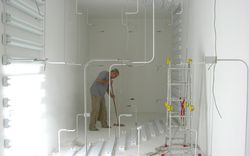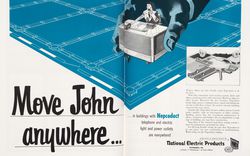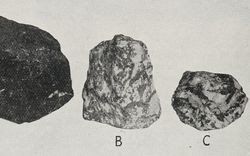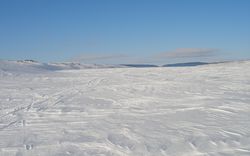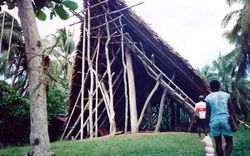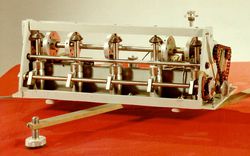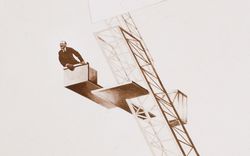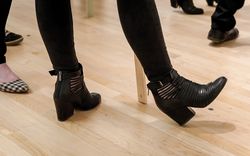This Pop Attitude
Juan José Castellón interviewed by Andrew Goodhouse
During a visit to the exhibition Jai Tech: Ábalos&Herreros selected by Juan José Castellón, music can be heard playing in the gallery. Guest curator Juan José Castellón, who worked in the office of Ábalos&Herreros, selected these songs as background music for the exhibition, to evoke the atmosphere of the office as he remembered it: “Hello Sunshine” and “Golden Retriever” by Super Furry Animals, “Silence is Easy” by Starsailor, “Años 80” and “El equilibrio es imposible” by Los Piratas, “Nada es gratis en la vida” by El Cuarteto de Nos, “Save it for a Rainy Day” by The Jayhawks, “Agosto esquimal” by Maga, “Retorciendo palabras” by Fangoria, and “Echo de menos” by Kiko Veneno.
The music helps to recreate in the gallery a bit of the office that Iñaki Ábalos and Juan Herreros led in Madrid from 1984 through 2008. But how important was music to the working environment of the office? We asked Juan José Castellón to tell us more.
- AG
- Was there music playing in the office all the time?
- JJC
- Yes, there was. I think it was even necessary because we spent a lot of time in the office. It’s not that we were working late every day, but it was intense and there were a lot of projects going on. It was important to be focused, but it was also important to have good communication, because one person didn’t just do one thing; one person did three things and coordinated with others on different projects.
It was a collaborative and flexible structure in the office. We all had a lot of responsibility, and I did especially because I was travelling and working on-site. I think the music played a crucial role in generating this comfortable atmosphere. Basically, you felt you were in a good environment. You weren’t stressed.
The atmosphere was light and the architecture was meant be as light as possible. Music was a way to achieve this lightness, so in that sense we all shared our music very openly. My personal taste was probably different from some of my colleagues’, but we found a kind of common ground of music that became the office’s, to build a team atmosphere.
Sometimes we brought our own music. This was before MP3s and Spotify, so we had CDs. Some were already there, from previous generations of the office. - AG
- So you just added and added.
- JJC
- We had a collection, which was not very big—maybe twenty-five or thirty CDs. And some of us added to this. It was nice because nobody was trying to impose their choices.
We played a lot of songs over and over; they became a part of the spirit of the office. For example, when we were finishing work on Friday, we always played a sequence of songs that announced that after work we were probably going to have some beers together. Or when we were really focused on a competition, the music changed according to our mood, maybe not consciously. But it was a kind of collective mood, not an individual one. When Juan or Iñaki entered the room and were very happy, they would play their favourite songs and sometimes even start singing.
That’s why I wanted to bring the music into the exhibition. Actually now that it’s there, when I walk past the room, even without looking at the exhibition I can feel this atmosphere that I remember from the office. It gives a psychological and emotional dimension to the work in the exhibition, because we aren’t just showing the physical documents. The visitor can get a bit of the atmosphere that we experienced in the office. - AG
- Are the songs you chose for the exhibition mostly Friday afternoon songs, or is it a mix?
- JJC
- I think they are songs that were played quite often. These songs have this pop attitude: this kind of lightness. We would play them and suddenly feel relaxed. Some of the songs are in Spanish and some in English. I think this mix was related to the office, because we had a Spanish core of workers, but half of the studio was quite international, from Germany, Poland, Mexico…
We had very local music, from Madrid, and then we brought music in from Mexico or from England, a bit of punk sometimes, a bit more radical. But it was always music that connected to our feelings at that point in the office. - AG
- So it was eclectic in terms of genres?
- JJC
- Yes, but the common parameter is this lightness or happiness. We played everything. David Sobrino, who was very important in the office, was the official DJ. He would probably make a better selection for the exhibition than I did. He likes music a lot and he took the lead: bringing in new songs and making sure that something was always playing. But really we were all involved.
- AG
- Do you still listen to these songs, or did you rediscover them for the exhibition?
- JJC
- Some of them, I hadn’t heard since that time. They were songs that I connected to the office, but I rediscovered many of them. Of course, I like some of the groups, like Los Piratas, but the music in the exhibition isn’t necessarily the music that I listen to. It’s rather the music that I associate with this time and this professional experience. Super Furry Animals and the Go-Betweens are not my favourite bands. I just like them because they bring these memories back.
- AG
- Could you imagine Ábalos&Herreros without music?
- JJC
- No. The music was so related to us, to the people we were then. Iñaki and Juan were very good at choosing people to join the staff. We all had a very good relationship, and I don’t think this was an accident. I think Iñaki and Juan were really trying to bring into the office not just the best talents—they were surely hiring people with a strong intellectual background and with good skills in architecture—but also people with a particular attitude or personality. Some of them have their own practices now and we are all over the world, but we shared a lot of experiences when we worked together and we’re still close.
The music was part of this experience, and after work we would go out for beers or to the cinema or a party. This was an extension of our working time, because there’s a point in the life of an architect—especially when you are working in a busy office—when your personal life and your professional life are completely mixed together. Your friends are your colleagues and your projects are your own questions. Your experiences and even your growth as a person are closely tied to your work.
When we had problems in the office, they were problems not just between colleagues but between friends. It’s difficult to differentiate, and that’s why looking through the archives is not something I can do with a lot of distance. I can’t take a scientific approach. For me, there’s an emotional connection to Juan and Iñaki, but also to the time I spent in the office.
The exhibition Jai Tech: Ábalos&Herreros selected by Juan José Castellón, resulted from Castellón’s focused immersion in the Ábalos&Herreros archive at the CCA. It was presented in 2015 as part of Out of the Box: Ábalos&Herreros.
